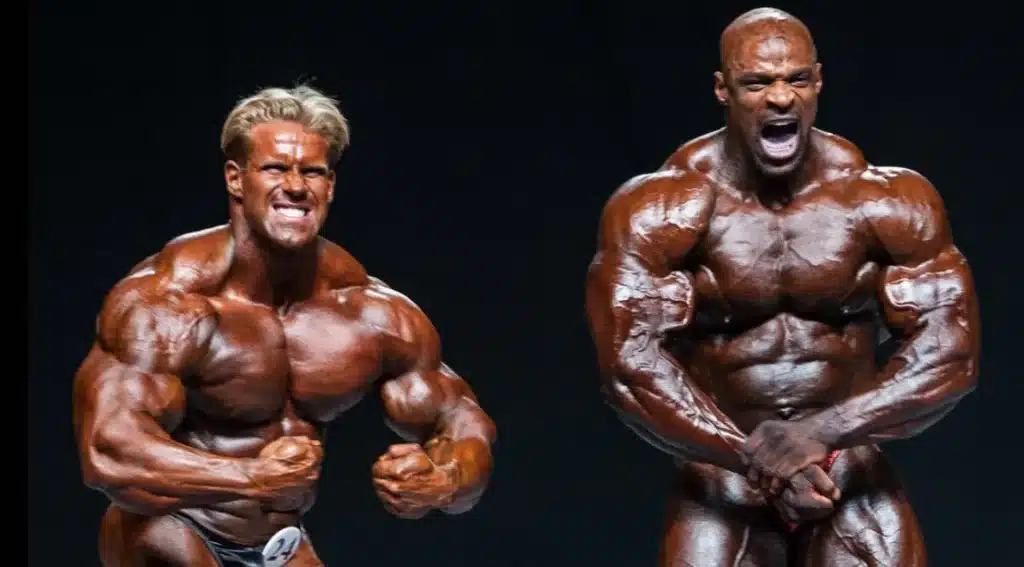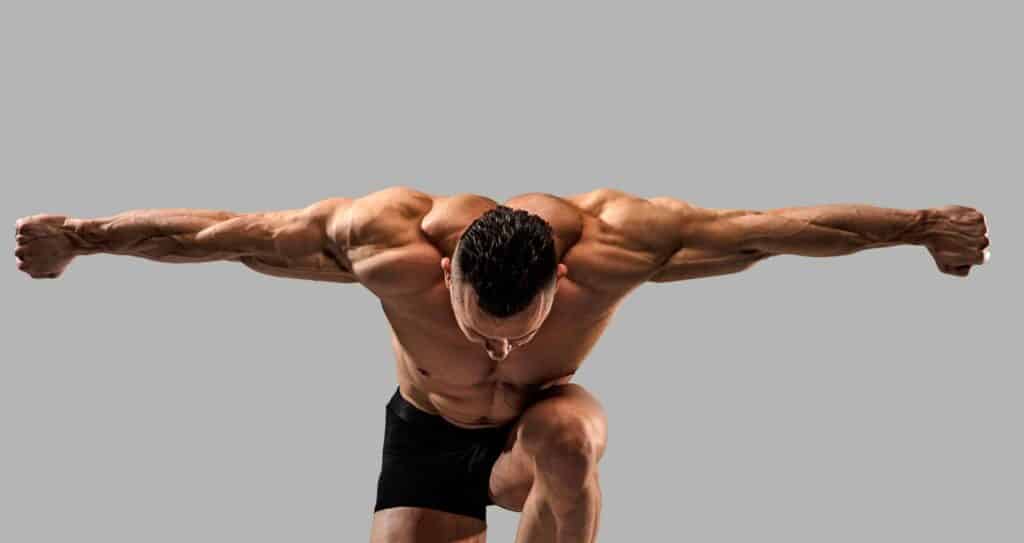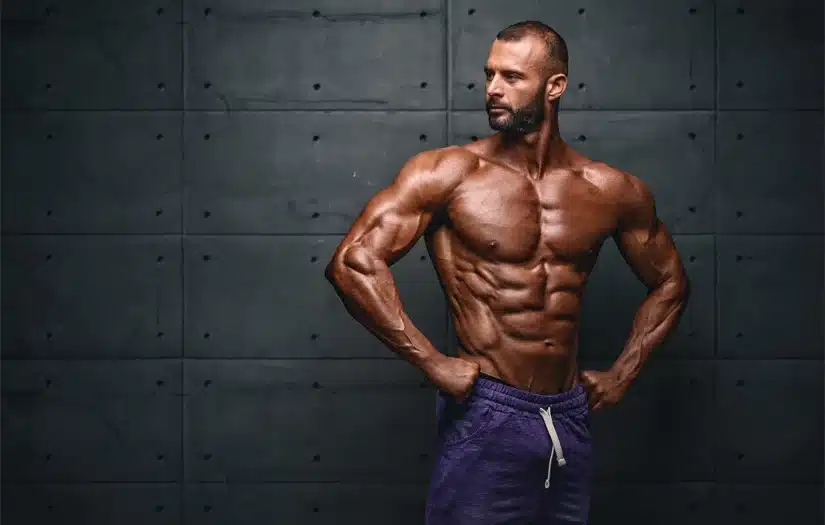Introduction
How To Pose For Bodybuilding: At its core, posing in bodybuilding is a choreographed display of a bodybuilder’s physique, highlighting each muscle group’s definition, symmetry, and proportionality. The ultimate goal is to create visual harmony and present a powerful and balanced physique to judges and the audience. Posing can make the difference between winning and losing a competition, even if the competitor has a superb physique.
To excel in posing, one must cultivate both physical and mental attributes. Physically, flexibility, mobility, and body awareness are key. These attributes allow a bodybuilder to smoothly transition between poses, maintain the correct form, and avoid fatigue during long periods on stage. Flexibility, especially, plays a significant role in achieving the perfect muscle pop and accentuation. The mental aspect of posing is equally vital. Confidence is paramount, as it directly translates to a commanding stage presence. Visualization techniques help bodybuilders mentally rehearse their poses and improve their muscle control, enhancing their overall performance.
We will cover the fundamentals of stance, posture, and transitions, providing step-by-step instructions and visual aids to assist aspiring bodybuilders in perfecting their poses. Additionally, we will discuss the importance of practice and critique, emphasizing the need for constant refinement. Posing is a skill that evolves over time, and consistent practice is the key to mastering it.

Is Posing good for bodybuilding?
Posing helps develop muscle maturity (that drier, harder, more developed look that seasoned bodybuilders have).
Muscle Mind Connection
One of the primary benefits of posing in bodybuilding is the enhancement of the muscle-mind connection. When a bodybuilder poses, they learn to flex and contract specific muscle groups consciously. This not only helps them display their physique better but also aids in muscle development. By mastering the art of posing, bodybuilders can isolate and engage individual muscles during their workouts, leading to more targeted and effective training sessions.
Visual Assessment
Posing allows bodybuilders to visually assess their progress and identify areas that need improvement. By examining their physique from various angles and under different lighting conditions, they can make necessary adjustments to their training and nutrition plans. Posing acts as a mirror that reflects both strengths and weaknesses, enabling bodybuilders to tailor their workouts to achieve a more balanced physique.
Presentation and Competition
In competitive bodybuilding, posing is a crucial aspect that can make or break a competitor’s success. The ability to strike elegant and powerful poses on stage is what sets apart the champions from the rest. Judges evaluate not only the size and definition of the muscles but also the symmetry, flow, and presentation. Posing routines showcase the bodybuilder’s hard work, dedication, and creativity, making it an integral part of any competition.
What is the rule 5 in bodybuilding?
5) Lifting Heavy But Correct Form Is STILL The Key
Train with heavy weights but don’t ever neglect the correct form.
Muscle Repair and Growth
After a strenuous workout, the body goes into repair mode during the recovery period. Muscles that have been subjected to resistance training experience microtears, and it is during rest that these tears are repaired and the muscles grow stronger and larger. Without proper rest, the body’s ability to repair and grow muscles becomes compromised.
Hormonal Balance
Rest and recovery play a crucial role in maintaining a healthy hormonal balance, particularly in relation to key hormones like testosterone and cortisol. Overtraining can lead to an increase in cortisol, a stress hormone that can promote muscle breakdown and hinder growth. Adequate rest helps to keep these hormonal levels in check, supporting muscle-building processes.
Injury Prevention
Overuse injuries are a common concern in bodybuilding. By adhering to Rule 5, bodybuilders can reduce the risk of injuries caused by excessive strain on the muscles, tendons, and joints. Rest days provide an opportunity for the body to recover, repair, and rejuvenate, ultimately preventing injuries that could sideline progress.
What is 5 3 1 beginner bodybuilding?
The 5/3/1 for beginners program is centered around the 4 core lifts, the bench press, squat, military press, and deadlift. By performing two of the four lifts each workout along with assistance work, the 5/3/1 for beginners program is designed for those that want to hit the gym for about an hour 3-4 times a week.
Simplicity: The 5/3/1 program is straightforward and easy to understand, making it ideal for beginners. You don’t need complex calculations or intricate periodization schemes.
Progressive Overload: The program emphasizes gradual and sustainable progress. By consistently adding weight to your lifts over time, you’ll ensure you’re always challenging your muscles and promoting growth.
Customization: While 5/3/1 provides a structured framework, it also allows for flexibility and customization. Beginners can tailor accessory work to their specific goals and needs, whether it’s hypertrophy-focused or strength-oriented.
Avoiding Overtraining: With its conservative training max and built-in deload week, 5/3/1 helps beginners avoid the risk of overtraining, which can hinder progress and lead to injuries.
Strength Foundation: Building a solid strength foundation is essential in bodybuilding. 5/3/1 prioritizes strength development, which can translate into more effective muscle-building efforts down the line.
What is the golden rule bodybuilding?
The ancient Greeks had specific ideas regarding how the perfect male physique should look: a small and muscular waist, tapered back, wide shoulders, and detailed, but not overwhelmingly huge, muscles. The size of each muscle related to the next in what is known as the “Golden Ratio.”
Training: Building a well-sculpted physique requires consistent, structured workouts. This means adhering to a training program over an extended period. Consistency ensures that you progressively overload your muscles, leading to growth and development. Skipping workouts or frequently changing routines can hinder your progress.
Nutrition: Diet is a cornerstone of bodybuilding. Consistently consuming the right balance of macronutrients, vitamins, and minerals is essential for muscle growth, recovery, and overall health. Deviating from your nutritional plan can slow down your progress and impede your ability to reach your bodybuilding goals.
Recovery: Recovery is where your body repairs and grows after intense training. Consistent sleep, rest, and stress management are critical for optimal recovery. Skipping rest days or neglecting sleep can lead to overtraining, injuries, and reduced gains.
Mindset: Mental fortitude is just as crucial as physical strength in bodybuilding. Consistency in maintaining a positive, determined mindset can help you push through plateaus, setbacks, and moments of doubt. It keeps you focused on your goals, even when progress seems slow.
What is the secret of bodybuilding?
Focus on Perfect Form and on Contracting the Muscle
Remember, this is bodybuilding and thus you need to focus on perfect execution of the exercises so that your muscles (and not your tendons or joints) are the ones doing the work. Never sacrifice form in the name of using more weight!
Progressive Overload: Consistently challenging the muscles with progressively heavier weights or higher resistance is the key to muscle growth. Skipping workouts or inconsistent training disrupts this process.
Nutritional Consistency: Achieving nutritional goals requires consistent adherence to a well-balanced diet. Inconsistent eating patterns can lead to metabolic confusion and hinder progress.
Recovery and Adaptation: Muscles grow during rest and recovery. Consistent sleep, relaxation, and stress management support the body’s adaptation and repair processes.
Long-Term Success: Bodybuilding is not a short-term endeavor; it’s a lifestyle. Consistency ensures that individuals can sustain their progress and continue building muscle over the years.
How can I look like a bodybuilder fast?
Combine compound (multi-joint) exercise with isolation (single-joint) movements. Don’t train too often or too long. Give yourself enough time between workouts to rest and recuperate. Maximize the nutrition in your diet and minimize the calories to achieve the necessary definition and muscularity.
Set Clear Goals and a Realistic Timeline
Before embarking on your transformation journey, define your specific goals and establish a realistic timeline. Understand that significant changes to your physique take time, and attempting to rush the process can lead to injury or disappointment. Instead, set incremental milestones and focus on steady progress.
Prioritize Progressive Overload
Progressive overload is the key to muscle growth. To accelerate your results, ensure that your training program includes consistent increases in resistance or intensity. Aim to lift heavier weights or perform more challenging exercises over time to stimulate muscle growth.
Follow a Structured Training Program
Adopt a well-structured training program designed for muscle building. Bodybuilding-focused routines often include a combination of compound exercises (e.g., squats, deadlifts, bench press) and isolation exercises (e.g., bicep curls, tricep extensions) to target various muscle groups. Consider seeking guidance from a certified personal trainer or experienced bodybuilder to create a customized program tailored to your goals.
Train with Intensity and Focus
In the gym, maximize your time by training with intensity and focus. Avoid long, aimless workouts and prioritize shorter, high-intensity sessions. Ensure that you maintain proper form to prevent injuries while lifting challenging weights.
How do you pose for physique?
Rotate slightly at the shoulders so the camera can see the back shoulder as well as the separation between the chest. Tense those along with the arms. Allow some daylight to be seen between the torso and both arms, but don’t bring them way away from your body. Smile.
Start with the Basics: The Relaxed Pose
The relaxed pose is your starting point. Stand up straight with your feet shoulder-width apart, shoulders back, and chest lifted. Keep your core engaged, and let your arms hang naturally by your sides. This foundational pose sets the tone for your other poses and emphasizes good posture and presentation.
Front Pose: Classic Bodybuilding Stance
For the front pose, step one foot slightly forward and angle it outward while keeping your hips squared to the front. Contract your quads, glutes, and core to accentuate muscle definition. Maintain an upright posture and flex your chest and shoulders, creating an appealing V-taper.
Side Pose: Showcasing Proportions
In the side pose, turn your body to the side while maintaining a slight arch in your lower back. Keep your front leg bent and your rear leg extended. Contract the muscles of the leg closest to the audience while flexing the opposing arm’s biceps and forearm. This pose emphasizes the symmetry and proportionality of your physique.
Back Pose: Highlighting Rear Development
The back pose displays your rear muscle development. Face away from the audience, keeping your feet shoulder-width apart. Flex your glutes, hamstrings, and lower back, emphasizing your muscularity. Contract your lats and raise your arms slightly to show off your upper back and triceps.
What matters most in bodybuilding?
Healthy Diet/Nutrition
Just the same as bodybuilding we need food for us to function and get energy. Our food needs to be healthy though. Our food intake plays an factor in our bodybuilding lifestyle. A healthy balanced diet is required for maximum gains.
Consistency
Consistency is the foundation upon which bodybuilding success is built. It is the unwavering commitment to your training and nutrition plan over an extended period. Consistency means showing up at the gym day after day, week after week, and adhering to your dietary guidelines without fail. It’s the secret behind progressive muscle growth and sustainable results.
Progressive Overload
Progressive overload is the cornerstone of muscle development. It involves gradually increasing the resistance or intensity of your workouts over time. By consistently challenging your muscles with heavier weights or more repetitions, you stimulate growth and adaptation. This principle lies at the heart of every successful bodybuilder’s training regimen.
Nutrition and Diet
What you put into your body plays a pivotal role in bodybuilding. Proper nutrition and diet provide the raw materials your body needs to repair and build muscle. Protein, carbohydrates, healthy fats, vitamins, and minerals are essential components of a balanced diet that supports muscle growth, recovery, and overall health.
Recovery and Rest
Muscles grow and repair during rest and recovery periods. Neglecting these crucial phases can lead to overtraining, injury, and stalled progress. Prioritizing adequate sleep, relaxation, and stress management is paramount. It’s during these moments of rest that your body rebuilds and emerges stronger.

Conclusion
Effective posing is not merely about showcasing one’s muscularity but also about conveying a story through the body. Each pose, transition, and muscle flex tells a tale of dedication, discipline, and relentless hard work. It’s an opportunity to exhibit one’s transformation and commitment to the art of bodybuilding.
We have explored the physical and mental aspects of posing. We’ve learned that flexibility, mobility, and body awareness are fundamental physical attributes, allowing a bodybuilder to strike poses with grace and precision. The mental component cannot be underestimated; confidence and visualization techniques empower competitors to exude charisma and command the stage.
Practice and critique have emerged as recurring themes in our exploration. Posing is an evolving skill, and regular practice sessions are the crucible in which it is honed. Seeking constructive feedback, whether from experienced coaches, peers, or videos of one’s own posing, is indispensable for improvement. Even the most seasoned bodybuilders continually refine their poses. The journey to mastering bodybuilding posing begins with mastering the fundamentals of stance, posture, and transitions, then gradually progressing to intricate poses. Each pose has its unique challenges and nuances, and a solid foundation is essential for tackling them effectively.

